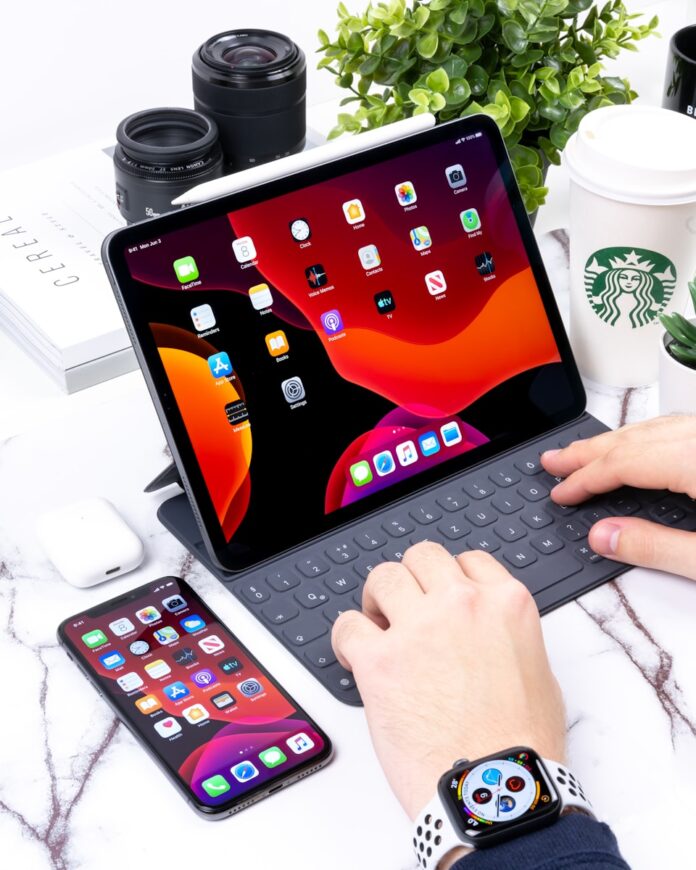A Glimpse into Tomorrow: The Promise of Bezel-Less Smartphones
Apple has long been at the forefront of innovation in the smartphone industry, consistently pushing boundaries and setting new standards. The prospect of bezel-less smartphones from Apple has been a topic of speculation and excitement among tech enthusiasts. As rumors swirl and anticipation builds, let’s delve into the possibilities and implications of Apple’s next smartphones potentially featuring full screens with no bezels.
Embracing the Edge: The Evolution of Smartphone Displays
Smartphone displays have undergone significant evolution over the years, transitioning from bulky, bezel-heavy designs to sleek, edge-to-edge screens. Bezel refers to the frame surrounding the display on a device. While initially serving structural and functional purposes, bezels have increasingly become a design consideration, with manufacturers striving to minimize them for a more immersive viewing experience.
What Are Bezels and Why They Matter
Bezels play a crucial role in smartphone design, housing components such as front-facing cameras, speakers, and sensors. However, they also impact the overall aesthetics and usability of the device. Excessive bezels can detract from the visual appeal of a smartphone and limit the screen-to-body ratio, affecting the perceived value and user experience.
The Road to Bezel-Less Devices
Apple’s Pursuit of Minimalism: A Historical Perspective
Apple has a history of prioritizing minimalist design and seamless integration of hardware and software. From the introduction of the original iPhone to the latest iterations, such as the iPhone 12 series, Apple has consistently refined its design language, inching closer to the ideal of a fully immersive, bezel-less display.
Advancements in Display Technology: Enabling Bezel-Free Designs
The Rise of OLED Technology
One of the key enablers of bezel-less designs is OLED (Organic Light-Emitting Diode) technology. Unlike traditional LCD displays, OLED panels are flexible and can be manufactured without the need for a backlight, allowing for thinner and more flexible form factors.
In-Display Sensors: A Seamless Integration
Another crucial development is the integration of sensors directly into the display. This includes components like fingerprint scanners and facial recognition sensors, which can now be embedded beneath the screen, eliminating the need for dedicated bezels or physical buttons.
Rumors and Speculations
Insights from the Tech Grapevine: What We Know So Far
The rumor mill has been abuzz with speculation about Apple’s plans for bezel-less smartphones. While Apple has remained tight-lipped about specific details, various clues and leaks offer tantalizing glimpses into the company’s intentions.
Patent Filings: Clues to Apple’s Bezel-Less Vision
Apple’s patent filings provide valuable insights into its research and development efforts. Recent patents suggest that Apple is exploring innovative solutions to achieve bezel-less designs, including advanced display technologies and novel manufacturing techniques.
Insider Reports: Leaks and Speculations
Leaks from reliable sources within the supply chain and Apple’s ecosystem have fueled anticipation for bezel-less iPhones. Reports suggest that Apple is experimenting with different form factors and screen technologies to achieve a seamless, edge-to-edge display.
Analyst Predictions: Assessing Feasibility and Likelihood
Industry analysts have weighed in on the feasibility and likelihood of Apple releasing bezel-less smartphones. While some believe that technical challenges and cost considerations may delay the transition, others are optimistic about Apple’s ability to overcome these hurdles and deliver groundbreaking devices.
Challenges and Considerations
Engineering Hurdles: Overcoming Technical Limitations
The transition to bezel-less designs poses several engineering challenges for Apple. These include ensuring structural integrity, maintaining display quality, and integrating essential components without compromising functionality or performance.
User Experience: Balancing Form and Functionality
Grip and Durability: Addressing Ergonomic Concerns
One concern with bezel-less designs is the impact on device ergonomics and usability. Without bezels to provide a grip or buffer against accidental touches, users may find it challenging to handle their smartphones securely. Apple will need to carefully consider design elements such as curved edges and textured surfaces to enhance grip and durability.
Notch vs. Bezel: Finding the Optimal Design
Another consideration is the trade-off between eliminating bezels entirely and retaining a small notch or cutout for essential sensors and cameras. While a completely bezel-free design offers maximum immersion, it may necessitate compromises in functionality or aesthetics. Apple must strike a balance between form and functionality to meet user expectations.
The Implications of Bezel-Less Designs
Aesthetics vs. Practicality: The Debate Continues
The transition to bezel-less designs raises questions about the balance between aesthetics and practicality. While a seamless, edge-to-edge display undoubtedly enhances the visual appeal of a smartphone, it also introduces potential usability challenges and compromises.
Enhanced Immersion: Redefining the User Experience
One of the primary benefits of bezel-less designs is the immersive viewing experience they offer. By maximizing the screen-to-body ratio and minimizing distractions, bezel-less smartphones create a more engaging and visually stunning user interface.
The Impact on App Development: Adapting to Full-Screen Interfaces
Bezel-less designs also have implications for app developers, who must adapt their software to accommodate larger, edge-to-edge displays. This includes optimizing user interfaces, adjusting touch targets, and leveraging new interaction paradigms to make the most of the available screen real estate Bezel-less designs also have implications for app developers, who must adapt their software to accommodate larger, edge-to-edge displays. This includes optimizing user interfaces, adjusting touch targets, and leveraging new interaction paradigms to make the most of the available screen real estate.
Consumer Expectations and Market Dynamics
Anticipating the Reception: Will Consumers Embrace the Change?
The success of bezel-less smartphones hinges on consumer acceptance and adoption. While tech enthusiasts may eagerly embrace the latest innovations, the broader market may have varying preferences and priorities. Apple will need to carefully gauge consumer sentiment and tailor its offerings accordingly.
Competitor Responses: How Other Manufacturers Are Reacting
Android Counterparts: Leading the Bezel-Less Revolution
Android manufacturers have been at the forefront of the bezel-less trend, with many flagship devices boasting edge-to-edge displays and innovative form factors. Competitors such as Samsung, OnePlus, and Xiaomi have set high standards for design and performance, challenging Apple to innovate and differentiate its offerings.
Market Trends: Shifting Preferences and Demands
Market dynamics play a significant role in shaping the evolution of smartphone design. As consumer preferences shift towards sleeker, more immersive devices, manufacturers are under pressure to deliver innovative solutions that capture attention and drive sales. Apple’s foray into bezel-less smartphones reflects its commitment to staying ahead of the curve and meeting evolving market demands.
Apple’s Vision for the Future
Beyond Smartphones: Extending Bezel-Less Designs to Other Devices
Apple’s pursuit of bezel-less designs extends beyond smartphones to other product categories. From tablets and laptops to wearables and home appliances, Apple aims to create a cohesive ecosystem of seamlessly integrated devices with stunning displays and intuitive interfaces.
Environmental Considerations: Sustainability in Design and Production
In addition to innovation and aesthetics, Apple places a strong emphasis on sustainability and environmental responsibility. As it explores new materials and manufacturing processes for bezel-less devices, Apple is mindful of minimizing its carbon footprint and reducing waste throughout the product lifecycle.
Conclusion
A Glimpse into Tomorrow: The Promise of Bezel-Less Smartphones
The prospect of Apple’s next smartphones featuring full screens with no bezels represents a significant milestone in the evolution of mobile technology. As Apple continues to push boundaries and redefine industry standards, consumers can look forward to a future where immersive, bezel-less displays seamlessly blend form and function, ushering in a new era of innovation and possibility.
FAQs
- Will bezel-less smartphones be more fragile than traditional designs? Bezel-less designs may raise concerns about durability and susceptibility to damage. However, manufacturers are implementing advanced materials and structural enhancements to ensure robustness and reliability.
- What impact will bezel-less displays have on battery life? While larger displays may consume more power, advancements in display technology and power management algorithms can mitigate these effects. Ultimately, battery life will depend on a variety of factors, including usage patterns and device optimization.
- Are there any drawbacks to bezel-less smartphones? Bezel-less designs may present challenges such as increased susceptibility to accidental touches and reduced structural integrity. Additionally, some users may find the absence of bezels disorienting or uncomfortable initially.
- Will bezel-less smartphones support traditional accessories like cases and screen protectors? Manufacturers are developing accessories tailored to bezel-less designs, including slim-fit cases and edge-to-edge screen protectors. While these accessories may offer limited protection compared to traditional designs, they can help preserve the sleek aesthetics of bezel-less smartphones.
- How will bezel-less designs impact pricing and availability? Bezel-less smartphones are typically positioned as premium offerings, commanding higher price points than their traditional counterparts. Availability may also be limited initially, as manufacturers fine-tune production processes and address potential engineering challenges.


